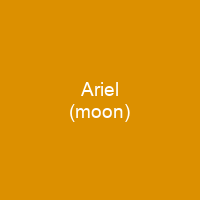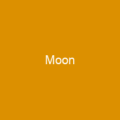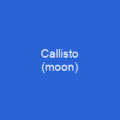Ariel (moon)

Ariel is the fourth-largest of the 27 known moons of Uranus. Among the smallest of the Solar System’s 19 known spherical moons, it is composed of roughly equal parts ice and rocky material. Its northern and southern hemispheres face either directly towards or directly away from the Sun at the solstices.
About Ariel (moon) in brief
 Ariel is the fourth-largest of the 27 known moons of Uranus. It was discovered in October 1851 by William Lassell and named for a character in two different pieces of literature. Among the smallest of the Solar System’s 19 known spherical moons, it is composed of roughly equal parts ice and rocky material. Its orbit lies completely inside the Uranian magnetosphere. Ariel’s northern and southern hemispheres face either directly towards or directly away from the Sun at the solstices. There are no active plans at present to return to study the moon in more detail, although various concepts such as a Uranus orbiter and probe have been proposed. Once every 42 years, mutual occultations between Uranus and its moons become possible. A number of such events occurred in 2007–2008, including an occultation of Ariel by Umbriel on 19 August 2007. In the past, however, it may have been in a 5: 3 resonance with Miranda, which could have been partially responsible for the heating of that moon. Ariel may have once been locked in the 4: 4: 1: 4 resonance with Titania, which later escaped from it. It is named after the leading sylph in The Rape of the Lock and the spirit who serves Prospero in Shakespeare’s The Tempest. The moon is also designated Uranus I. Among Uranus’s five major moons, Ariel is the second closest to the planet, orbiting at the distance of about 190,000 km. It has a complex surface consisting of extensive cratered terrain cross-cut by a system of scarps, canyons, and ridges.
Ariel is the fourth-largest of the 27 known moons of Uranus. It was discovered in October 1851 by William Lassell and named for a character in two different pieces of literature. Among the smallest of the Solar System’s 19 known spherical moons, it is composed of roughly equal parts ice and rocky material. Its orbit lies completely inside the Uranian magnetosphere. Ariel’s northern and southern hemispheres face either directly towards or directly away from the Sun at the solstices. There are no active plans at present to return to study the moon in more detail, although various concepts such as a Uranus orbiter and probe have been proposed. Once every 42 years, mutual occultations between Uranus and its moons become possible. A number of such events occurred in 2007–2008, including an occultation of Ariel by Umbriel on 19 August 2007. In the past, however, it may have been in a 5: 3 resonance with Miranda, which could have been partially responsible for the heating of that moon. Ariel may have once been locked in the 4: 4: 1: 4 resonance with Titania, which later escaped from it. It is named after the leading sylph in The Rape of the Lock and the spirit who serves Prospero in Shakespeare’s The Tempest. The moon is also designated Uranus I. Among Uranus’s five major moons, Ariel is the second closest to the planet, orbiting at the distance of about 190,000 km. It has a complex surface consisting of extensive cratered terrain cross-cut by a system of scarps, canyons, and ridges.
The surface shows signs of more recent geological activity than other Uranian moons, most likely due to tidal heating. Because Ariel, like Uranus, orbits the Sun almost on its side relative to its rotation, its northern and Southern poles see permanent night or daylight for half a Uranian year. This means it is subject to an extreme seasonal cycle; just as Earth’s poles see Permanent Night or daylight around thesolstices, so Ariel’s Poles see permanent Night or Daylight around the Solstices as well. The Voyager 2 flyby coincided with the 1986 southern summer solstice, when nearly the entire northern hemisphere was dark. The orbit has a small eccentricity and is inclined very little relative to the equator of the planet. Its orbital period is around 2. 5 Earth days, coincident with its rotational period. This means that one side of the moon always faces the planet; a condition known as tidal lock. Although William Herschel claimed to have observed four additional moons, this was never confirmed and those four objects are now thought to be spurious. Ariel is not involved in any orbital resonance with other Uranus moons. It may have escaped from a motion from Titania or Saturn, due to Uranus’ oblateness, to the lesser degree of Jupiter or Saturn’s oblativeness. It could also have been part of the escape from Uranus from Saturn.
You want to know more about Ariel (moon)?
This page is based on the article Ariel (moon) published in Wikipedia (as of Nov. 04, 2020) and was automatically summarized using artificial intelligence.












